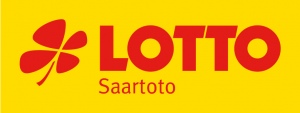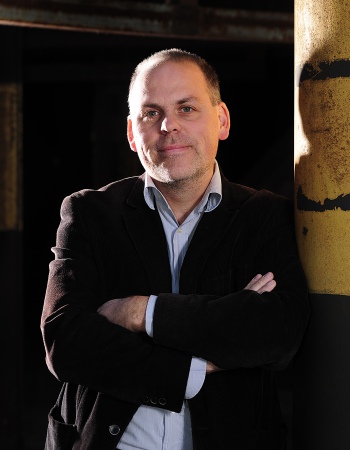GERMAN CINEMA
GERMAN CINEMA
GERMAN CINEMA
1895 to the present day
Völklinger Hütte World Cultural Heritage Site
15 October 2023 to 18 August 2024
Press conference on Thursday 12 October 2023 at 11am
Opening ceremony on Saturday 14 October 2023 at 7pm
In the presence of Federal President Frank-Walter Steinmeier
Opening party on Saturday 14 October 2023 at 9.30pm
An exhibition by the Völklinger Hütte World Cultural Heritage Site and Deutsche Kinemathek Berlin
This has never been done before, but now it is actually happening: the historic blower hall of the Völklinger Hütte World Cultural Heritage Site is the congenial setting for a synopsis of German film from 1895 to the present day. Large screens and monitors invite you to wander through a unique film landscape that achieved world renown with the expressionism and cinema of the Weimar Republic and reflects Germany’s culture and history like no other medium.
“The joint exhibition with the Völklinger Hütte World Cultural Heritage Site is a challenge that we were very happy to take on. The location provides incomparable inspiration and enables a completely new way of presenting German film history. On top of this, there was also the perfect cooperation between the teams from Völklingen and Berlin, an incredible experience!” said Dr. Rainer Rother, Artistic Director of the Kinemathek Berlin.
The exhibition by the Völklinger Hütte World Cultural Heritage Site and Deutsche Kinemathek Berlin provides the first ever view of German film history that is as comprehensive as it is immersive. The multimedia show spans from the legendary “Wintergarten” programme by the Skladanowsky brothers on 1 November 1895 in Berlin – two months before the Lumière brothers in Paris – through early silent film and sound film to current formats and film productions from 2023.
This highly elaborate show both scientifically and in terms of exhibition staging, contains over nine hours of film material and more than 350 exhibits from Deutsche Kinemathek’s collection, and it not only demonstrates Germany’s eminent contribution to global film history, but also simultaneously reflects on the country’s cultural and contemporary history in an intensive parallel trail to the history of the Völklinger Hütte before, after, during and between the wars of the 20th century.
“At its best, film is great art, but at the same time it is also always a mirror of the culture and era of its creation, making this exhibition triply significant and worth seeing: the experience of aesthetics, culture and history coincides here in a very special way,” emphasises Dr. Ralf Beil, General Director of the Völklinger Hütte World Cultural Heritage Site.
A panorama of the 20th and 21st centuries in Germany unfolds in ten exhibition chapters that are as eventful as they are moving, from the pioneering age around 1900, the First World War and the 1920s of the Weimar Republic, through National Socialism, the Second World War and the film culture of a country divided into the Federal Republic of Germany and the German Democratic Republic, to all-German film after 1990.
While around 100 projections on large screens present exemplary excerpts from significant films, thirty monitors serve to provide further in-depth information. This makes it possible to trace the influence of “Caligari” on Tim Burton’s “Edward Scissorhands” from 1990, as well as the after-effect of Lotte Reiniger’s early animated film “The Adventures of Prince Achmed” on David Yates’ “Tale of the Three Brothers” in “Harry Potter and the Deathly Hallows” from 2010.
A separate chapter is dedicated to Fritz Lang’s groundbreaking film “Metropolis”: while the dance of Machine Mary in the sinful “Yoshiwara” – her costume made of rhinestones, pearls and feathers is being recreated especially for this exhibition as well as the heads of the deadly sins by Walter Schulze-Mittendorff – closes the chapter of the Weimar Republic, a separate machine room with two screens, a model of the Lower City as well as Machine Mary’s sculpture including a large poster and Freder’s costumes in Upper City clothes and Lower City workers’ outfits evokes the “Metropolis” worlds. In addition to the director and cinematographer, these were particularly influenced by Erich Kettelhut and Aenne Willkomm, whose groundbreaking architectural drawings and avant-garde costume designs are also shown.
The blower hall with its machines and flywheels is not only the congenial exhibition architecture for “Metropolis”. The most successful commercial film of the Third Reich, the Nazi endurance film “The Great Love” starring Zarah Leander, can be seen in a narrow, bunker-like basement, while the winged figures from Wim Wenders’ “Wings of Desire” sit and stand high in the air.
The show also presents filmmakers from all trades at pivotal points, providing insights into film studio work, the film industry and production processes. Thus, the unleashed camera of the Weimar Republic becomes reality with the Stachow Filmer on a free-swinging frame from “The Last Laugh” as well as the ski camera for “The White Hell of Pitz Palü”. Focus cabinets across the decades are dedicated to Monika Bauert, Artur Brauner, Marlene Dietrich, Robert Herlth, Monika Jacobs, Hildegard Knef, Wolfgang Kohlhaase, Asta Nielsen and Guido Seeber.
Kurt Gerron is a tragic example of German film biographies with all their faults: the actor, who starred alongside Marlene Dietrich and Louise Brooks in “The Blue Angel” and “Diary of a Lost Girl”, fled from the Nazis in 1933, was deported from Amsterdam with his entire ensemble and had to shoot the film “Theresienstadt” in a concentration camp before being murdered in Auschwitz. Photos and letters commemorate him.
Widely unknown rarities such as Veit Harlan’s “The Ruler” with drastic black-and-white steelwork images from 1937 or Ula Stöckl’s sensual, liberating colour rush “Neun Leben hat die Katze” from 1968 will be presented alongside cinematic incunabula such as Volker Schlöndorff’s “The Tin Drum” or Rainer Werner Fassbinder’s “Fear Eats the Soul”.
A 1950s film studio is set up in the compressor hall directly adjacent to the blower hall. Géza von Radványi’s 1958 remake of the 1931 Leontine Sagan film “Mädchen in Uniform”, starring Romy Schneider and Lilli Palmer, is being filmed there. The entire stage set can be experienced: the replica of the classroom with backdrop, the scene of the legendary kiss between pupil and teacher, Romy’s and Lilli’s costumes, cameras on rails, everything illuminated with the original spotlights of the time. The final highlight of the German film exhibition is a cinema that revisits the chronological film panorama from 1895 to 2023 on original cinema chairs with cut and counter-cut: as a film collage criss-crossing through the ages.
The exhibition in the unique ambience of the blower and compressor hall of the Völklinger Hütte World Cultural Heritage Site is aimed decidedly at a large national and international audience. Scientifically grounded, it operates at the same time with a strong emphasis on direct film experience and is thus a truly crowning conclusion to the “150 years of Völklinger Hütte” anniversary at the World Cultural Heritage Site.
"This major exhibition is only possible thanks to the outstanding performance of the two great teams at the Völklinger Hütte World Cultural Heritage Site and the Deutsche Kinemathek, as well as due to the extensive funding from the Saarland Ministry of Economics as a cultural beacon project and the generous financial support from the Sparkassen-Finanzgruppe and Saartoto," emphasises Director General Ralf Beil.
GERMAN CINEMA
INFORMATION
An exhibition by the Völklinger Hütte World Cultural Heritage Site and Deutsche Kinemathek Berlin
Venue: Blower hall and compressor hall at the Völklinger Hütte World Cultural Heritage Site
Term: 15 October 2023 to 18 August 2024
Curators: Dr. Ralf Beil, General Director of the Völklinger Hütte World Cultural Heritage Site, and Dr. Rainer Rother, Artistic Director of Deutsche Kinemathek Berlin
Exhibition space: 6000 square metres
Press conference: Thursday 12 October 2023 at 11am
Opening ceremony: Saturday 14 October 2023 at 7pm
In the presence of Federal President Frank-Walter Steinmeier, the Minister President of Saarland Anke Rehlinger and with speeches by actor Burghart Klaußner and director Feo Aladag
Opening party: Saturday 14 October 2023 at 9.30pm with DJ Schoko, Cologne
Directors from A-Z: Maren Ade, Fatih Akin, Feo Aladag, Josef von Báky, Wolfgang Becker, Edward Berger, Hans Bertram, Frank Beyer, Leo Birinski, Jürgen Böttcher, Tim Burton, Heiner Carow, İlker Çatak, Helmut Dietl, Hans Deppe, Andreas Dresen, Slatan Dudow, E. A. Dupont, Doris Dörrie, Ulrich Edel, Richard Eichberg, Hanns Heinz Ewers, Arnold Fanck, Rainer Werner Fassbinder, Tim Fehlbaum, Nora Fingscheidt, Peter Fleischmann, Bob Fosse, Urban Gad, Katja von Garnier, Richard Groschopp, Iris Gusner, Alice Guy-Blaché, Michael Haneke, Rolf Hansen, Veit Harlan, Julia von Heinz, Sonja Heiss, Florian Henckel von Donnersmarck, Werner Herzog, Phil Jutzi, Helmut Käutner, Gerhard Klein, Wolfgang Kohlhaase, Alexander Kluge, Lars Kraume, Nicolette Krebitz, Gerhard Lamprecht, Fritz Lang, Paul Leni, Wolfgang Liebeneiner, Alfred Lind, Caroline Link, Ernst Lubitsch, Kurt Maetzig, David Mallet, Karl Heinz Martin, Joe May, Sebastian Meise, Lewis Milestone, Friedrich Wilhelm Murnau, Max Ophüls, Mamoru Oshii, Richard Oswald, Ulrike Ottinger, Georg Wilhelm Pabst, Heinz Paul, Wolfgang Petersen, Christian Petzold, Rosa von Praunheim, Burhan Qurbani, Géza von Radványi, Nicholas Ray, Robert Reinert, Lotte Reiniger, Harald Reinl, Leni Riefenstahl, Oskar Roehler, Gary Ross, Walther Ruttmann, Leontine Sagan, Helke Sander, Helma Sanders-Brahms, Ulrich Schamoni, Sebastian Schipper, Christoph Schlingensief, Volker Schlöndorff, Hans-Christian Schmid, Maria Schrader, Reinhold Schünzel, Ridley Scott, Robert Siodmak, Wolfgang Staudte, Hans Steinhoff, Josef von Sternberg, Ula Stöckl, Rolf Thiele, Wilhelm Thiele, Georg Tressler, Monika Treut, Margarethe von Trotta, Tom Tykwer, Gustav Ucicky, Edgar G. Ulmer, Victor Vicas, Wim Wenders, Robert Wiene, Konrad Wolf, Max Skladanowsky, David Yates, Eugen York, Herrmann Zschoche.
Film stations: Around 100 projections on large screens as well as 30 monitors on pedestals with in-depth film presentations
Objects on display: More than 350 exhibits. Film posters (large banners), original manuscripts, screenplays, drawings, letters and documents, set photos, star postcards, advertising materials, neon signs, camera technology, equipment as well as costumes from all decades from Marlene Dietrich and Louise Brooks to the “Nosferatu” mask and hands of Klaus Kinski to the “Kukeri” costume from Maren Ade’s “Toni Erdmann” from 2016
Focus stagings on actors in all trades from A-Z:
Sepp Allgeier (camera man), Monika Bauert (costume designer), Robert Baberske (camera man), Artur Brauner (producer), Marlene Dietrich (actress, singer), Josef Fenneker (graphic designer), Karl Freund (camera man), Kurt Gerron (actor, film director, singer), Robert Herlth (set designer), Monika Jacobs (costume designer), Erich Kettelhut (set designer), Hildegard Knef (actress, author, singer), Wolfgang Kohlhaase (screenwriter, film director), Asta Nielsen (actress, first international film star), Lilly Palmer (actress), Romy Schneider (actress), Guido Seeber (camera man, film pioneer), Ula Stöckl (screenwriter, film director), Aenne Willkomm (costume designer) and Christa and Gerhard Wolf (screenwriters).
Chapters of the exhibition:
- EARLY FILM – On the way to becoming a mass medium 1895-1918
- EXPRESSIONIST FILM ART – Dream and trauma 1919-1924
- THE CINEMA OF THE WEIMAR REPUBLIC – Unleashed cameras, a new way of seeing 1919-1932
- METROPOLIS – Babel in Babelsberg 1927
- FILM IN NATIONAL SOCIALISM – Propaganda and escapism 1933-1945
- POST-WAR CINEMA – From rubble films to building the wall 1949-1961
- GERMAN FILM IN THE EAST AND WEST – Awakenings and demolitions 1962-1989
- REORIENTATION – All-German filmmaking 1990-2023
- A 1950s FILM STUDIO – “Mädchen in Uniform” 1958/1931
- CINEMA – A film collage 2023-1895
Publications: As part of the exhibition, a handbook of around 400 pages will be published by Sandstein Verlag Dresden, which will also serve as the exhibition catalogue. Resulting from several years of research by Deutsche Kinemathek Berlin, an opulently illustrated 900-page volume on the subject will also be published at a later date.
Framework programme: An extensive framework programme with film screenings, discussions and lectures on all ten exhibition chapters will accompany the show. Silent films will be presented with live music.
Cinema cooperation: There is cooperation with selected cinemas in Saarland.
Partnership with the Max Ophüls Festival: In Saarland, the project is closely linked to the Max Ophüls Festival in January 2024, which provides it with a unique historical foundation, including the exemplary inclusion of the Saarbrücken-born film director and namesake with his late colour film “Lola Montez” from 1955.
With the generous support of



Media partner


Press Information GERMAN CINEMA
Download (docx | 272 KB)Images
The use of press photos is granted exclusively in the context of reporting on the exhibition THE GERMAN FILM (15 October 2023 to 18 August 2024 at the Völklinger Hütte World Cultural Heritage Site).
-

Das Cabinet des Dr. Caligari_Film poster © Deutsche Kinemathek – Grafikarchiv
-

Das Cabinet des Dr. Caligari, 1920 Source: Deutsche Kinemathek, Berlin
-

Alkohol, 1920, Film poster © Source: Deutsche Kinemathek, Berlin
-

Metropolis, Film poster Source: Österreichische Nationalbibliothek
-

Metropolis, 1927 © Deutsche Kinemathek/ Horst von Harbou
-

Metropolis, 1927 Source: Cinémathèque Française
© Deutsche Kinemathek/ Horst von Harbou -

Metropolis, 1927 Source: Cinémathèque Française
© Deutsche Kinemathek/ Horst von Harbou -

Metropolis, 1927 © Deutsche Kinemathek/ Horst von Harbou
-

Metropolis, 1927 © Deutsche Kinemathek/ Horst von Harbou
-

Metropolis, 1927 © Deutsche Kinemathek/ Horst von Harbou / Walter Schulze-Mittendorff
-

Berlin – Die Sinfonie der Großstadt, Film poster © Deutsche Kinemathek – Grafikarchiv
-

Tagebuch einer Verlorenen, 1929 Source: Deutsche Kinemathek, Berlin
-

Marlene Dietrich in "Der blaue Engel", 1930 Source: Deutsche Kinemathek, Berlin
-

Der blaue Engel, 1930 Source: Deutsche Kinemathek, Berlin
-

Der blaue Engel, 1930 Source: Deutsche Kinemathek, Berlin
-

Die Drei von der Tankstelle, Film poster © Deutsche Kinemathek – Grafikarchiv
-

M, Film poster © Deutsche Kinemathek – Grafikarchiv
-

Mädchen in Uniform, Film poster © Deutsche Kinemathek – Grafikarchiv
-

Feuertaufe, Film poster © Deutsche Kinemathek – Grafikarchiv
-

Münchhausen, Film poster Source: Deutsche Kinemathek – Grafikarchiv
-

Die Sünderin, Film poster © Deutsche Kinemathek – Grafikarchiv
-

Das Mädchen Rosemarie, 1958 Source: Deutsche Kinemathek, Berlin
-

Das Mädchen Rosemarie, 1958 Source: Deutsche Kinemathek, Berlin
-

Angst essen Seele auf, 1974 Source: Deutsche Kinemathek, Berlin
-

Die Blechtrommel, Film poster Source: Deutsche Kinemathek – Grafikarchiv
-

Solo Sunny, 1980 Source: Deutsche Kinemathek, Berlin
© DEFA-Stiftung -

Das Boot, 1981 Directed by WOLFGANG PETERSEN
© Bavaria Film / Karlheinz Vogelmann -

Das Boot, 1981 Directed by WOLFGANG PETERSEN
© Bavaria Film / Karlheinz Vogelmann -

Christiane F. Wir Kinder vom Bahnhof Zoo, 1981, Film poster © Deutsche Kinemathek, Berlin
-

Director Werner Herzog during the shooting of "Fitzcarraldo" 1982 © Werner Herzog Film / Deutsche Kinemathek
-

Schtonk!, 1992 © Bavaria Film/ Rolf v. d. Heydt
-

Lola rennt, 1998 Source: Deutsche Kinemathek, Berlin
-

REQUIEM, 2006, Film still © Pandora Film, 23/5 Filmproduktion
-

REQUIEM, 2006, Film still © Pandora Film, 23/5 Filmproduktion
-

Yella, Film poster Source: Deutsche Kinemathek – Grafikarchiv
-

Der Staat gegen Fritz Bauer, 2015 © zero one film GmbH / Martin Valentin Menke
-

Toni Erdmann, 2016 © Toni Erdmann / Komplizen Film
-

Toni Erdmann, 2016 © Toni Erdmann / Komplizen Film
-

Systemsprenger, 2019, Film poster © 2019 Port au Prince Pictures
-

Systemsprenger, 2019, Film still © 2019 Port au Prince Pictures
-

Berlin Alexanderplatz, 2020, Film still © Sommerhaus Filmproduktion
-

Im Westen nichts Neues, 2022, Film still © Netflix / Reiner Bajo
-

Im Westen nichts Neues, 2022, Film still © Netflix / Reiner Bajo
-

Im Westen nichts Neues, 2022, Film still © Netflix / Reiner Bajo
-

Im Westen nichts Neues, 2022, Film still © Netflix / Reiner Bajo
Contact

ArminLiedinger
Dr. Armin Leidinger
Communication / Presse
Telephone: +49 (0) 6898 / 9 100 151
armin.leidinger@voelklinger-huette.org












































